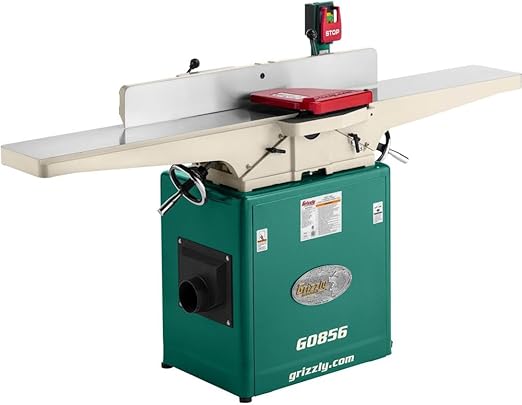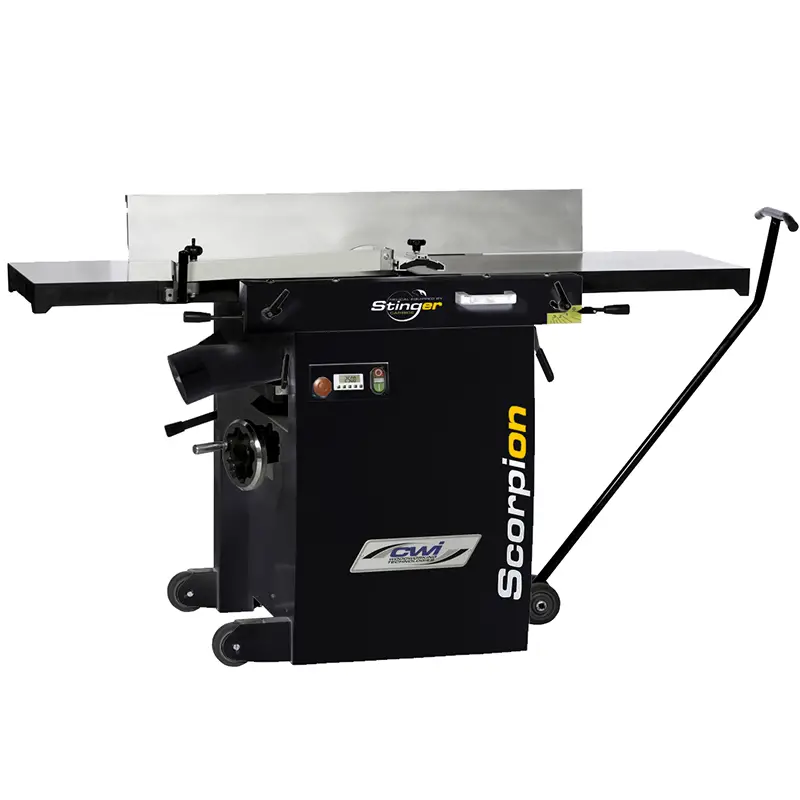Can You Use A Jointer On Both Sides? [Yes but…]
Have you ever wondered if it’s possible to use a jointer on both sides?
Well, the answer is yes! However, there are some important things to consider before attempting it.
Using a jointer on both sides can save time and effort when working with wood. It allows you to flatten and square up two adjacent edges simultaneously, which is especially useful for making wider boards.
However, there are limitations to this technique that you need to be aware of in order to achieve the best results.
In this article, we will explore the advantages and disadvantages of using a jointer on both sides and provide some tips for doing it effectively.
So, Can You Use A Jointer On Both Sides Or Not?
You may be wondering if it’s possible to use a jointer on both sides, and the answer is yes, but with some limitations.
Many jointers have tables on both sides, which means you can use them from either direction.
However, it’s important to note that jointing from the wrong side can cause tear-out and other issues.
It’s always best to consult the manufacturer’s instructions for guidance on how to properly use your specific jointer.
With proper care and attention, you can make the most of your jointer and achieve smooth, flat boards for all your woodworking projects.
What Are The Limitations Of Using A Jointer On Both Sides Of A Board?
As mentioned earlier, using a jointer on both sides of a board is possible. However, there are limitations to this practice.
One major limitation is the risk of overcutting the board. When using a jointer on both sides, it can be easy to remove too much material and end up with a board that is thinner than desired.
Additionally, using a jointer on both sides can also result in an uneven surface if the two sides are not perfectly parallel. It’s important to keep these limitations in mind when deciding whether or not to use a jointer on both sides of a board.
As with any woodworking tool, proper technique and caution should be exercised to ensure the best results possible.
Are There Any Safety Considerations To Keep In Mind When Using A Jointer On Both Sides?
Using a jointer on both sides can be compared to driving a car on a two-way street. While it is possible, there are safety considerations that need to be kept in mind.
Here are three important things to remember when using a jointer on both sides:
- Make sure the jointer is properly set up and adjusted before starting.
- Keep your hands away from the blades at all times.
- Use push blocks or other safety devices to keep your hands and fingers out of harm’s way.
By following these safety guidelines, you can use a jointer on both sides without putting yourself in danger. Always remember to prioritize safety when working with any power tool, and never take unnecessary risks.
Can Using A Jointer On Both Sides Help To Achieve A Specific Type Of Joint Or Edge Profile?
While safety should always be a top priority when using a jointer, it is worth considering if using the tool on both sides can help achieve a specific type of joint or edge profile.
By flipping the board and running it through the jointer again, you can create a perfectly flat surface on both sides and eliminate any warping or unevenness that may have occurred during the initial pass.
Additionally, some woodworkers use this technique to create a particular edge profile, such as a chamfer or bevel, by adjusting the angle of the jointer’s fence and running the board through from both directions.
However, it is important to keep in mind that this method will remove more material from your workpiece and potentially leave it thinner than intended.
As always, take caution when using a jointer and consult with an experienced woodworker if you are unsure about any aspect of its operation.
How Does The Size And Type Of Jointer Affect Its Ability To Work On Both Sides Of A Board?
Like a skilled dancer, the jointer can work both sides of a board with grace and precision. However, the size and type of jointer may affect its ability to do so effectively.
A smaller benchtop jointer may struggle with wider boards, while a larger floor-standing jointer can handle them more easily.
Similarly, spiral cutterhead jointers are known for producing smoother results on both sides of a board compared to straight knife models.
It’s important to consider your specific needs when choosing a jointer, as well as ensuring that it is set up correctly and used properly to achieve optimal results.
With the right tool and technique, you can achieve perfectly flat and square boards on both sides without breaking a sweat.
What Type Of Boards Are Best Suited For Using A Jointer On Both Sides?
As discussed in the previous section, the size and type of jointer can greatly affect its ability to work on both sides of a board.
However, it’s important to note that not all boards are best suited for using a jointer on both sides.
Generally, boards that are warped or have knots may require additional passes through the jointer or may not be suitable for jointing on both sides at all.
It’s also important to consider the thickness of the board, as thinner boards may not have enough material to withstand multiple passes through the jointer without becoming too thin.
Ultimately, it’s up to the woodworker to assess each individual board and determine if using a jointer on both sides is appropriate for achieving their desired outcome.
What Is The Difference Between Using A Jointer On One Side Versus Both Sides Of A Board In Terms Of The Resulting Surface Finish And Overall Quality
Using a jointer on one side versus both sides of a board can make a significant difference in the resulting surface finish and overall quality.
When using a jointer on only one side of a board, the opposite side may not be perfectly flat, which can result in an uneven surface. This can cause issues when gluing or joining pieces together, as they may not fit together as precisely as desired.
On the other hand, using a jointer on both sides of a board ensures that both sides are flat and parallel to each other, resulting in a more even and precise surface. This is especially important for projects where accuracy is key, such as fine woodworking or cabinetry.
While using a jointer on both sides may take more time and effort, the improved quality of the end result makes it well worth it.
Conclusion
In conclusion, using a jointer on both sides of a board is possible, but there are limitations and safety considerations to keep in mind. It can help achieve specific joint or edge profiles, but the size and type of jointer will affect its ability to work on both sides.
One potential objection may be that using a jointer on both sides may result in a less smooth surface finish compared to using it on one side. However, with proper technique and attention to detail, this can be mitigated.
Ultimately, using a jointer on both sides can be a useful tool in achieving quality woodworking results. So go ahead and give it a try!


